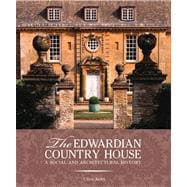The Edwardian Country House A Social and Architectural History

The Edwardian Country House A Social and Architectural History
- ISBN 13:
9780711233393
- ISBN 10:
071123339X
- Format: Hardcover
- Copyright: 11/27/2012
- Publisher: Frances Lincoln
Rent
Sorry, this item is currently unavailable.
Note: Supplemental materials are not guaranteed with Rental or Used book purchases.
Extend or Purchase Your Rental at Any Time
Need to keep your rental past your due date? At any time before your due date you can extend or purchase your rental through your account.
Summary
The magnificent country houses built in Britain between 1890 and 1939 were the last monuments to a vanishing age. Many of these great mammoths of domestic architecture were unsuited to the changes in economic and social priorities that followed the two world wars, and rapidly became extinct. Those that survive, however, provide tangible evidence of the life and death of an extraordinarily prosperous age. Originally published in 1980, long out of print and now thoroughly revised and reillustrated, this book recounts the architectural and social history of the era, describing the clients, the architects, the styles and accoutrements of the country houses. The people who could afford them - the Carnegies, the Astors, the Leverhulmes - had grown rich by exploiting the new economic opportunities of the age, and the houses they built in the years before the First World War reflect the desire for two contrasting ways of life. The social country house was the setting for the opulent world associated with Edward VII. The romantic country house was simpler, more genuinely rural, for those who wanted to be in closer contact with the countryside and the vanishing rural crafts, or who wanted an idyll of the past that did not suggest the world of the motor car. These traditions lost coherence after the war, and the period ended with a number of spectacular, and often eccentric, houses. Some of the most remarkable were those that not only replicated the look of old buildings, but used genuinely old materials and even incorporated whole Tudor buildings moved from other places. Clive Aslet writes of the immense changes in the way country houses of this period were lived in and used. The shortage of servants, aggravated by the First World War, spurred numerous developments in the technology of the country house - vacuum cleaners, washing machines, telephones and central heating were called upon to replace the army of servants who never returned from the trenches or the factories. Interior decorators, becoming increasingly in vogue, developed the style Louis Seize into the last word in Edwardian chic. Gardens came to be seen as integral to the concept of the country house and reconciled formal planning with informal planting. This fascinating world, so popularly depicted in Downton Abbey, can now be viewed from a new perspective. The Edwardian Country House will enlighten and entertain all those interested in glimpsing the lost life style of another age.






